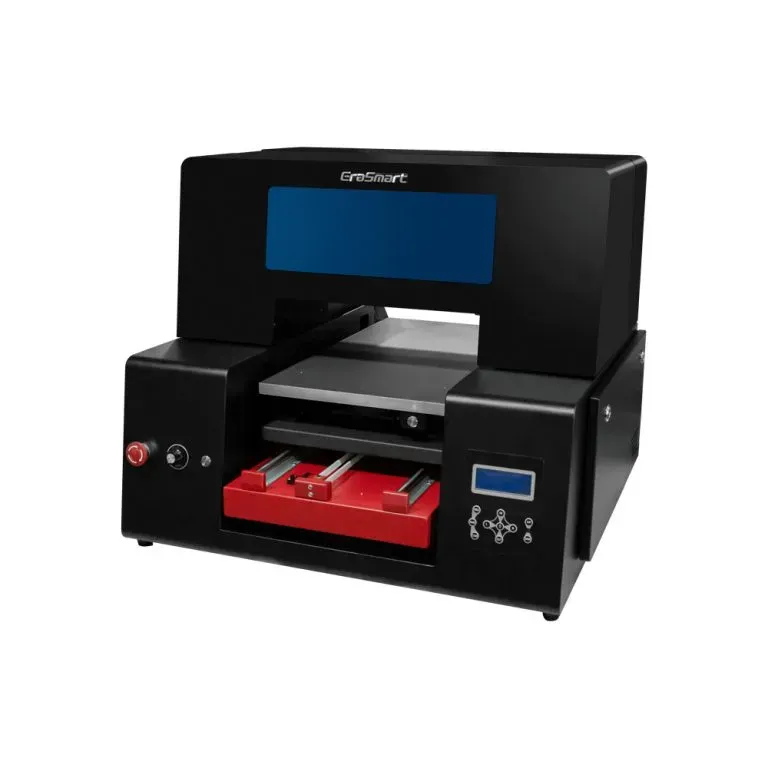UV DTF Technology, or UV Direct to Film technology, is reshaping the future of the printing industry with its innovative approach to creating vibrant, durable prints. This cutting-edge method leverages UV inks that cure instantly under ultraviolet light, delivering outstanding quality and detail for various applications. As businesses increasingly seek sustainable printing solutions, UV DTF technology proves to be a cost-effective and eco-friendly choice that minimizes waste while maximizing aesthetic appeal. With the ability to print on diverse substrates, from textiles to plastics, this advanced printing technology caters to the evolving needs of the market. In this article, we will delve deeper into UV DTF technology, exploring its numerous advantages and its significant impact on modern printing practices.
When talking about UV DTF technology, it’s important to recognize its place within the broader spectrum of modern printing technologies. Known alternatively as ultraviolet direct-to-film printing, this method embodies a revolutionary trend in sustainable printing that prioritizes both quality and environmental responsibility. By combining the efficiency of direct printing with the durability provided by UV curing, this innovative printing solution delivers remarkable results across a variety of materials. Businesses can benefit from producing long-lasting prints that require no lengthy drying times, making it ideal for fast-paced production environments. As such, many companies are turning to this sophisticated printing technique to boost their operational capabilities while remaining environmentally conscious.
Understanding the Core of UV DTF Technology
UV DTF (Direct to Film) technology represents a significant evolution in the printing arena, combining traditional direct-to-film techniques with advanced UV curing processes. This fusion allows for prints that are not only aesthetically pleasing but also possess remarkable durability. The technology works by applying specially formulated UV inks onto a film, which is then cured instantly under UV light, locking in vivid colors and sharp details. This meticulous process ensures that graphics remain vibrant for prolonged periods, making UV DTF prints a preferred choice for high-quality applications.
Furthermore, the unique nature of UV DTF technology means it can be applied to a broad spectrum of substrates, from textiles to metals and plastics. Such versatility is particularly advantageous for businesses seeking to diversify their product offerings while maintaining superior print quality. It empowers industries to produce items ranging from fashion apparel to promotional merchandise with bold and intricate designs, all while ensuring that the end products are built to last.
Advantages of UV DTF Over Traditional Printing Methods
One of the standout benefits of UV DTF technology is its ability to produce high-quality prints with impressive color fidelity and durability. Traditional printing methods often struggle with color reproduction, especially in intricate designs. In contrast, UV DTF employs high-quality inks that cure upon exposure to UV light, ensuring that each print is not only vivid but also more resistant to fading and wear over time. This durability translates to longer-lasting products, reducing the need for frequent reprints and ultimately saving costs. This makes UV DTF a superior option for businesses focused on quality and profitability.
Additionally, the eco-friendly nature of UV DTF technology cannot be overstated. Many conventional printing processes depend on solvent-based inks that can emit harmful volatile organic compounds (VOCs), contributing to environmental pollution. UV DTF, however, utilizes UV-curable inks that do not require solvents, reducing the overall ecological footprint of the printing process. Brands that embrace this sustainable approach are likely to appeal more to environmentally conscious consumers, strengthening their market position while promoting greener practices.
The Role of UV DTF in Sustainable Printing Initiatives
As sustainability becomes a critical focus for businesses worldwide, UV DTF technology emerges as a frontrunner in promoting eco-friendly printing solutions. By eliminating the use of harmful solvents commonly found in traditional printing methods, UV DTF significantly diminishes hazardous emissions. This proactive approach not only benefits the environment but coordinates with global efforts to encourage sustainable business practices. Companies adopting UV DTF are positioned to market their commitment to sustainability, thus attracting a niche of eco-conscious consumers who prioritize sourced materials and production methods.
Moreover, the efficiency of UV DTF processes, with their rapid turnaround times and reduced wastage, aligns well with sustainable development goals. The technology allows for precise ink application, which minimizes excess ink use during production, further enhancing resource efficiency. By investing in UV DTF technology, companies not only contribute to environmental preservation but also optimize their operational costs, laying a strong foundation for sustainable profitability.
Exploring Market Trends: Adoption of UV DTF Technology
The adoption of UV DTF technology is witnessing a significant upswing across various printing sectors, driven by the industry’s shift towards innovative and efficient solutions. More businesses are recognizing the advantages this technology brings in terms of print quality, efficiency, and sustainability. As statistics indicate a growing trend towards digitization within industries, the preference for UV printing methods—such as UV DTF—has risen dramatically. Companies have reported increased productivity and enhanced outcomes post-adoption, illustrating the effectiveness of this technology in modern printing environments.
In addition, the rise of custom and on-demand printing services has further catalyzed the shift towards UV DTF technology, with businesses eager to meet the personalized demands of their clientele. The flexibility and versatility of UV DTF printers empower companies to produce a variety of items—from intricate artworks to large banners—quickly and with superior quality. As more brands recognize the potential of UV DTF to revolutionize their operations, the printing landscape is likely to evolve towards these advanced technologies.
Versatile Applications of UV DTF Technology in Various Industries
UV DTF technology showcases remarkable versatility, making it applicable across numerous industries with varying demands. In the fashion sector, for example, businesses can leverage UV DTF printers to create custom apparel adorned with unique graphics that cater to individual consumer preferences. This ability to produce vibrant and detailed prints quickly opens doors in a competitive market where fashion trends change rapidly.
Moreover, the promotional products market benefits significantly from UV DTF technology. Companies can produce eye-catching merchandise—ranging from branded items to trade show giveaways—that attract attention and enhance brand visibility. High-quality prints with durability ensure that promotional products stand the test of time, making them valuable marketing tools. Such diverse applications underline the transformative potential of UV DTF technology in enhancing product offerings across multiple sectors.
Future of Printing: The Impact of UV DTF Technology
As industries continue to evolve, the future of printing looks promising with UV DTF technology at the forefront. The advancements in this technology not only address contemporary printing challenges but also pave the way for more innovative possibilities. With ongoing research and development, we can expect further enhancements in print quality, speed, and efficiency, ensuring that UV DTF remains a competitive leader in the printing sector.
Additionally, the integration of digital solutions alongside UV DTF processes suggests a seamless future for businesses. Digital printing trends, such as customized orders and real-time printing solutions, are beneficial alongside the capabilities offered by UV DTF. As companies invest in these technologies, the potential for increasing market share and attracting new customers grows dramatically. The continuous progression of UV DTF technology will undoubtedly shape the future landscape of the printing industry, driving it toward sustainability and efficiency.
Frequently Asked Questions
What are the main benefits of UV DTF technology in printing?
UV DTF technology offers several advantages in printing, including high-quality prints with vibrant colors that are durable and resistant to fading. This technology allows for versatile substrate applications, enabling printing on materials such as textiles, plastic, and glass. Additionally, UV DTF provides a cost-effective production process and emphasizes sustainability by eliminating harmful solvents typically used in printing.
How does UV DTF printing compare to traditional printing methods?
Unlike traditional printing methods that often involve solvent-based inks, UV DTF printing uses UV curing technology, which instantly sets the ink when exposed to ultraviolet light. This results in superior print quality, faster turnaround times, and greater durability. Furthermore, UV DTF reduces waste and offers greater adaptability across various substrates, making it a more versatile option in the printing industry.
Can UV DTF technology be used for sustainable printing?
Yes, UV DTF technology is considered a sustainable printing solution as it eliminates the use of harmful solvents and reduces volatile organic compounds (VOCs) emitted during the printing process. The UV curing method also minimizes waste, making it an eco-friendly choice for businesses aiming to highlight their commitment to sustainability in their printing practices.
What types of products can be created using UV DTF technology?
UV DTF technology is extremely versatile and can be utilized to create a variety of products. This includes custom apparel with intricate designs, promotional items that demand vivid graphics, high-quality indoor and outdoor signage, and decorative items like printed mugs and metal plates. Its adaptability allows businesses to cater to a wide range of customer needs.
Is UV DTF printing suitable for small businesses?
Absolutely! UV DTF printing technology is well-suited for small businesses due to the availability of compact and user-friendly printers. These devices streamline the printing process, enabling quick training for staff and reducing operational downtime. The cost-effectiveness and versatility of UV DTF allow small businesses to compete effectively in the printing market.
What are the key differences between UV printing and direct to film printing?
While both UV printing and direct to film (DTF) printing focus on quality outputs, the main difference lies in the process. UV printing utilizes UV light to cure inks directly onto the substrate, whereas DTF printing involves printing the design onto a film before transferring it onto the final surface. UV DTF technology combines both methods, achieving durability and versatility that enhances print quality across various materials.
| Key Point | Description |
|---|---|
| Introduction | UV DTF technology offers a revolutionary way to print designs with unmatched quality and durability, significantly impacting the printing industry. |
| What is UV DTF Technology? | A process that combines direct-to-film printing with UV curing for vibrant, durable, and instantly usable graphics. |
| Key Advantages | 1. High-Quality Prints 2. Versatility in Substrates 3. Cost-Effective Production 4. Sustainability Focus 5. User-Friendly Equipment |
| Growing Adoption | There is a global increase in UV DTF technology adoption, driven by a trend towards digitization and sustainability. |
| Real-World Applications | Applications include custom apparel, promotional products, signage solutions, and decorative items. |
Summary
UV DTF Technology is transforming the printing industry, offering businesses a cutting-edge solution for quality and sustainability. By merging direct-to-film printing with instant UV curing, UV DTF technology ensures vibrant, durable prints across a multitude of substrates, making it a versatile choice for various applications. The significant cost savings, enhanced production efficiency, and environmentally friendly processes put UV DTF technology at the forefront of modern printing methods. As enterprises seek to elevate their printing capabilities, embracing UV DTF technology is a strategic move, positioning them for success in a competitive market.



